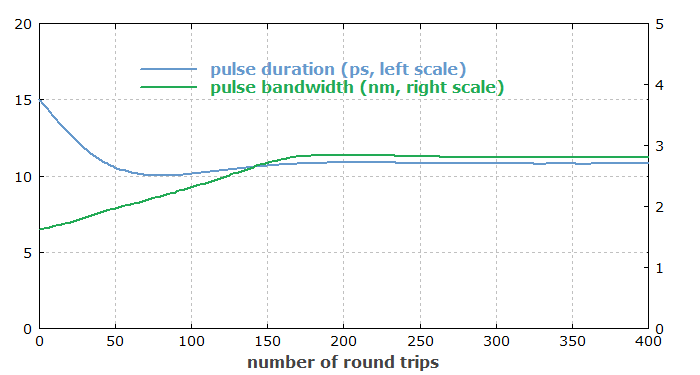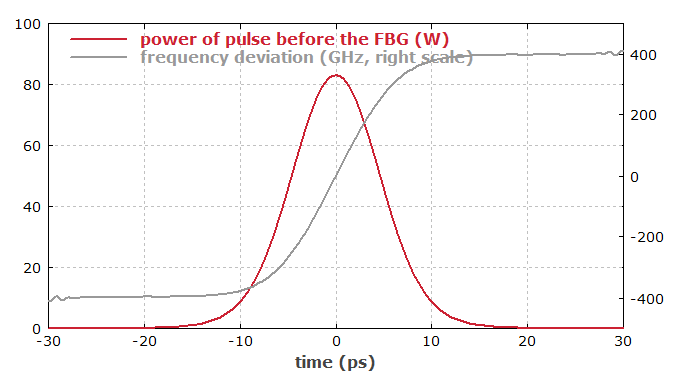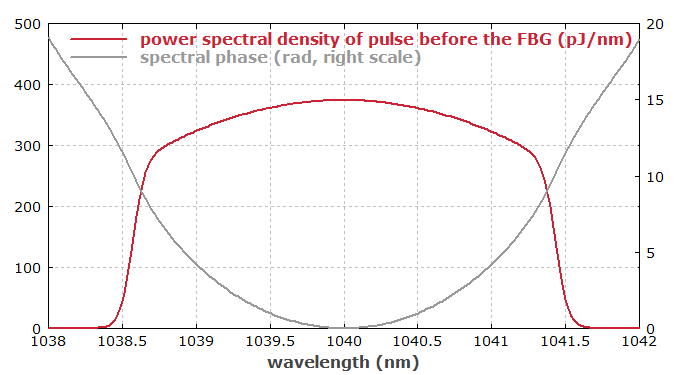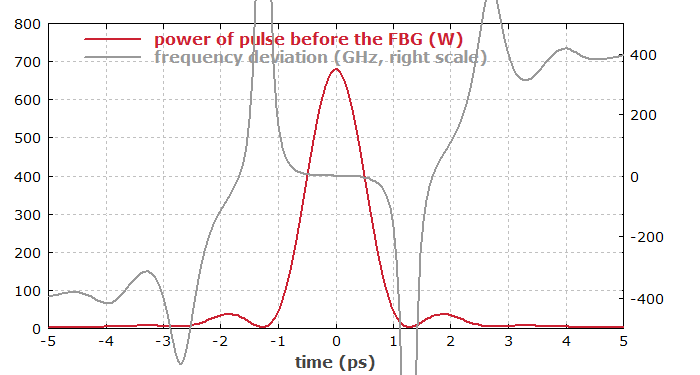RP ProPulse – Numerical Simulation of Pulse Propagation
| Overview | Purpose | Model | Interface | Demos | Versions |
Example Case: Mode-locked Fiber Laser
Mode-locked fiber lasers operate in very different regimes concerning not only the pulse parameters, but also the pulse formation mechanisms. As an example, we consider an all-normal-dispersion fiber laser, where the pulses undergo substantial changes within each resonator round trip.
The laser resonator contains the following:
- a fiber Bragg grating (FBG) with a limited reflection bandwidth and with substantial normal chromatic dispersion
- a fast saturable absorber
- a fiber providing laser gain, further normal chromatic dispersion and Kerr nonlinearity
This is implemented with the following description:
resonator: ring * FBG: T_out(f) := 1 - R_fbg(f) * FBG_dispersion: GDD = GDD_fbg * Absorber: satloss = dR_a [P_sat = P_sat_a] * Fiber [split = maxr(round(g_est / g_max), round(SPM_f * P_p0 / phi_nl_max))]: GDD = GDD_f, SPM = SPM_f, gain = g_ss [P_sat_av = P_sat_g] resonator end
(The model is fairly simplified in various respects; it would be easy to implement higher-order dispersion of the fiber and the grating, for example.)
As the pulse properties change substantially during the passage through the fiber, the fiber is assumed to be split into several subsections. The number of subsections is automatically calculated such as to limit both the amount of gain and nonlinear phase shift within each section.
The following diagram shows how the pulse parameters (taken before the grating) evolve. After only 200 resonator round trips, the pulses have approximately reached the steady state. (Note that the full gain dynamics are not included in that model; therefore, the pulse energy would actually take more round trips to settle to its steady state.)

The next diagram shows the resulting pulse (again before the grating) in the time domain. The optical frequency deviation from the reference frequency shows the strong nonlinear up-chirp of the pulse.

The next diagram shows the same pulse in the frequency domain. The spectral shape is typical for this kind of laser.

The nearly parabolic shape of the spectral phase profile would allow for efficient dispersive compression of the output pulses. This is demonstrated in the last diagram, where the pulse has gone through an automatically optimized dispersive compressor with second-order dispersion only.

Note that the software RP Fiber Power is actually even more suitable for fiber devices. See a demo for a mode-locked fiber laser.
